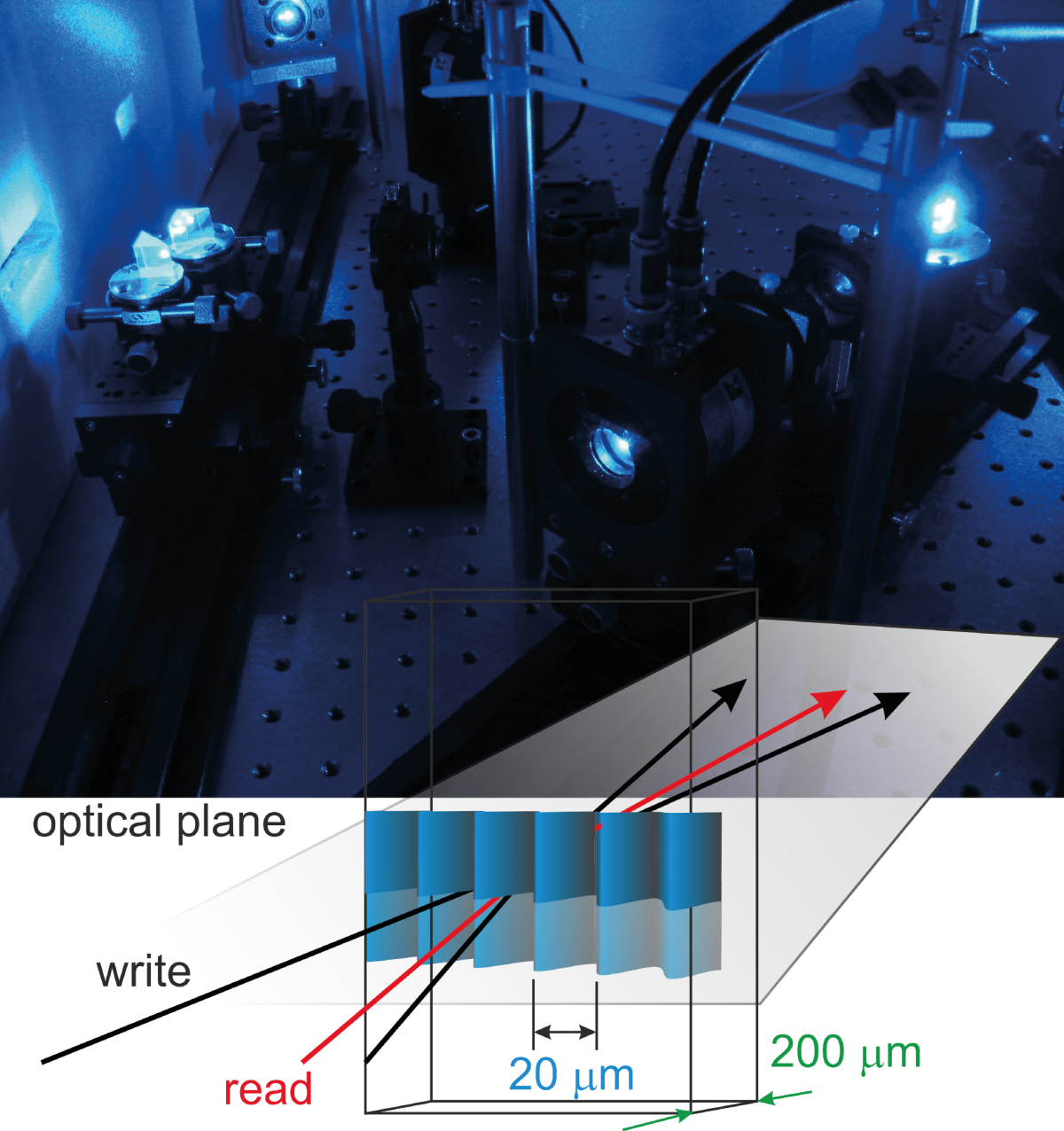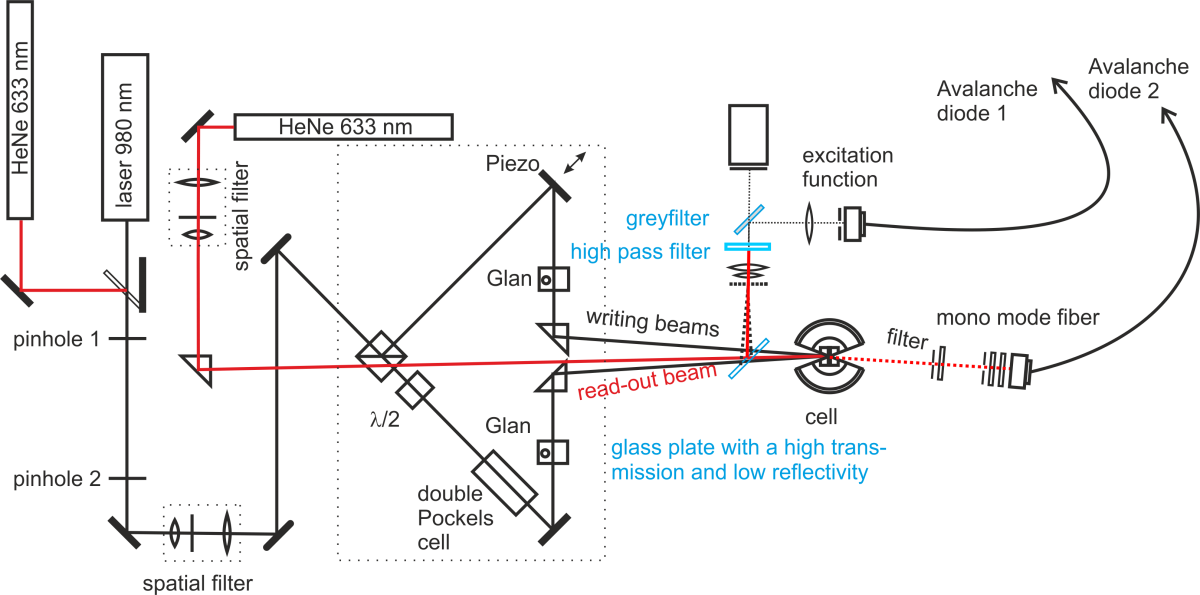Thermal Diffusion Forced Rayleigh Scattering (FZJ - ICS3)
Light Scattering
Description

DESCRIPTION OF THE FACILITY
Measurement principle:
A grating created by the interference of two laser beams is written in the sample. The set-up is optimized for aqueous solutions and uses an absoprtion band in the near infrared, converting the intensity grating into a temperature grating. After switching on the laser, a refractive index g
rating is formed in the solvent on the milli second time scale. On a longer time scale, the solute particles or molecules contribute to a change of the refractive index grating through thermal diffusion, where they either move to the cold or warm regions of the grating. Both gratings contribute to a combined refractive index grating that is read out by diffraction of a third laser beam. Analysing the time dependent difraction efficiency, three transport coefficients can be obtained: the thermal diffusivity Dth, the translational diffusion coefficient D, and the thermal diffusion coefficient DT. The ratio of the thermal diffusion coefficient and the translational diffusion coefficient allows the determination of the Soret coefficient ST.
For aqueous systems, the use of added dye to the sample can be avoided, using an infra red writing beam. The water is now heated, without any added dye, through the excitation of vibrational states.
SAMPLE REQUIREMENTS
Binary liquid mixtures, polymer solutions or colloidal dispersions (preferably in water or solvent with a weak absorption around 980 nm). The solutions should be transparent. The radius of the colloidal particles should be below 100 nm. A complete measurement including the measurement of the refractive index with concentration and temperature requires approximately 10-15 mL solution.
DETECTION
Avalanche Diode
WAVELENGTH OF THE WRITING LASER
980 nm
WAVELENTH OF THE READ-OUT LASER
632.8 nm
LASER POWER
1000/2000 mW at 980 nm
15 mW at 632.8 nm
SCATTERING ANGLES
2<θ<10°
FRINGE SPACING
5 nm
AMPLITUDE OF THE TEMPERATURE GRATING
20-100 μK
SHORTEST SAMPLE TIME
0.5s.
LOCATION
Facility available at Forschungszentrum Jülich, Germany
SCIENTIST IN CHARGE
Dr. S. Wiegand
Send an email to Dr. S. Wiegand
Local Contacts
- Dr. Simone Wiegand
- Dr. Hartmut Kriegs

